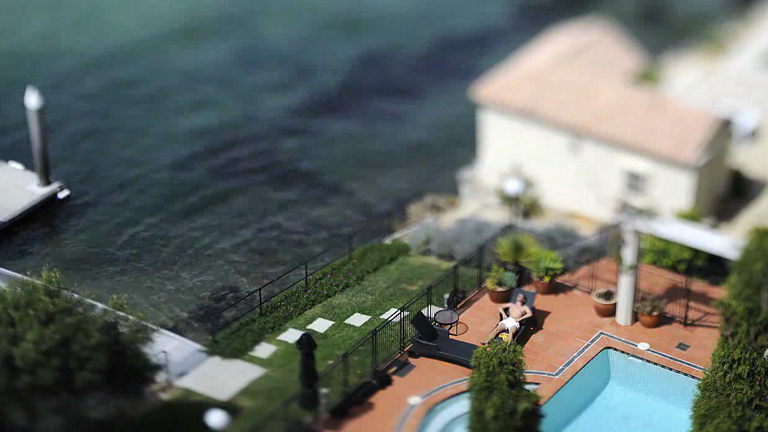Sydney-based photographer Keith Loutit montages thousands of tilt-shift photos and throws in some time-lapse trickery to create short films featuring Sydney Harbor and its environs, which confuse your brain into seeing souvenir-size miniatures of the Made-in-Taiwan-snow-dome school.
His work follows on from a technique coined by Olivo Barbieri, the Pioneer of Pocket-size, who creates photos of mass-monumental metropolitan spectacles like Las Vegas in what appears to be miniature form using tilt-shift technology and shooting from a helicopter to create images that are eerily reminiscent of Barbie Mini Kingdom.
For Chunks, Keith Loutit kindly agreed to share his secrets with us.
Can you explain your technique to us, what does the process of producing these short films involve?
By combining tilt-shift & time-lapse photography I help audiences to distance themselves from subjects they know well. My goal is to present ordinary subjects, that once treated by this technique become more curious. My technique combines thousands of photographic stills into short films that each last less than 3 minutes. My process begins with the identification of subjects and the planning of locations. Once these elements are established, I move onto more detailed planning around timing, lighting, and weather, with the aim of getting the image sequence right first time. As my process is laborious and time consuming, I maintain a list of scenes that need to be captured, and shoot when conditions are just right. This level of planning is essential to reduce the excessive wear and tear on my equipment caused by such long image sequences. To produce my first 4 short films took around 60,000 photographic frames, the majority of which will never be used.
As my subjects are unscripted, and my technique requires a stationary camera, I establish my field of view in anticipation of a subject’s likely movements. Rather than chase down subjects, I pre-position my camera and let the scene unfold in front of me. When back at home, I convert the image sequences into a quicktime format, and begin the process of editing and publishing. Many of these challenges are not unique, as time-lapse photography is relatively common, but my work differs in that I must combine scenes taken over many sessions to tell a believable story of a typical day in Sydney.
What is the role of time-lapsing in creating the illusion?
Tilt-shift photography tricks the brain into perceiving a scene as being miniature by simulating the very shallow depth of field that is common when photographing small things. Time-lapse completes the illusion and helps to transition the effect within motion pictures by dramatically speeding up the subject’s movements. This change in pace helps the effect because smaller subjects tend to move much faster than larger objects relative to their size. Time-lapse photography also creates a jerkiness that looks a lot like stop motion animation, a common technique used to animate clay models like Gumby. At some subconscious level, all viewers, not just photographers, understand how a subject’s depth of field, speed, and movement relate to its size. We all know that large ships move straight and steady… but row boats bounce on top of the waves. When combined together these effects make big ships bounce like the smallest of boats to create a powerful illusion that is difficult to shake even when you know the subject is ‘real’.
Is this a purely personal project, or is the ultimate goal commercial?/
I consider this work to be documentary and non-commercial. My goal is to present things as they are and help people to connect with their surroundings. I aim to produce short documentaries that record ordinary events, and catch the user’s attention for just a few moments. Each short typically lasts less than 3 minutes, to appeal to the short attention spans of internet audiences. Although my goal is non-commercial, I do take commercial projects on board that complement this work, and provide me with the financial assistance necessary to continue. I also have a day job.
Are you planning to miniaturize other locations around the world?
This is a natural extension of the project and something I would love to do.
 Submarine Channel
Submarine Channel